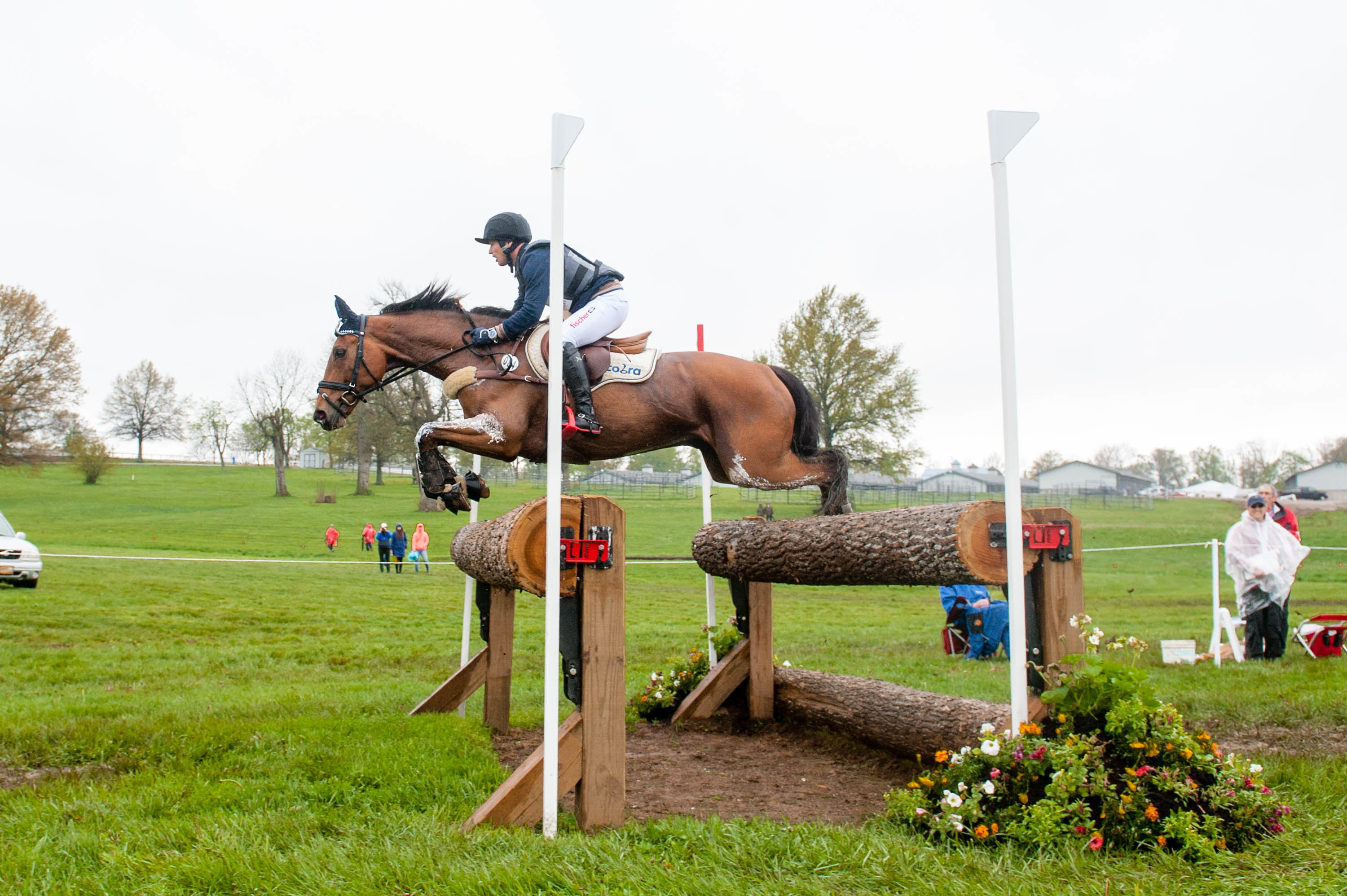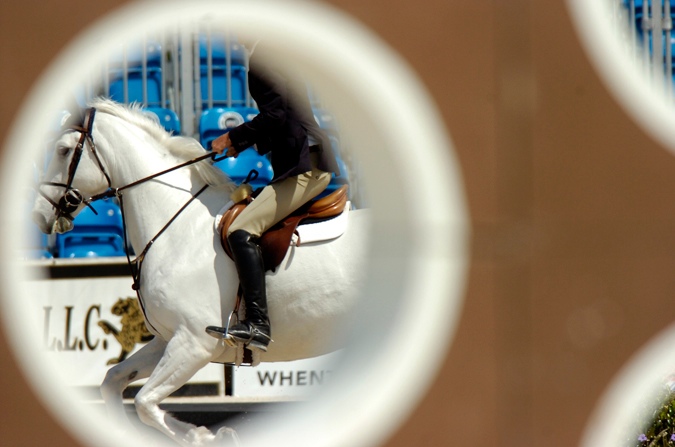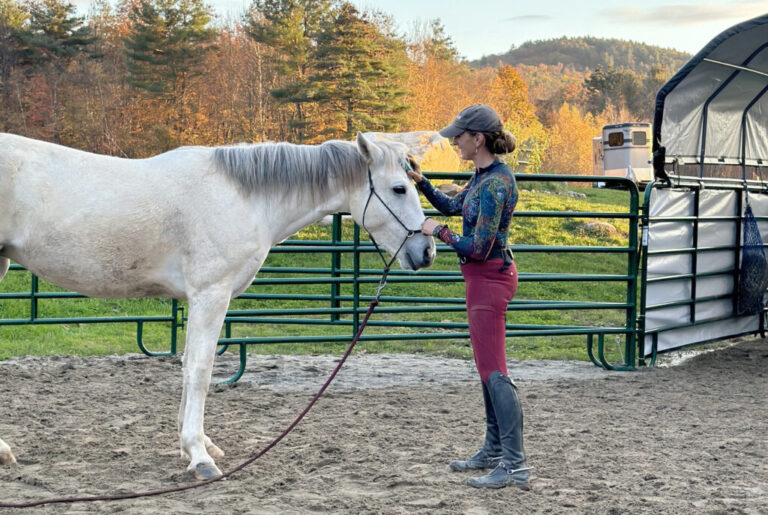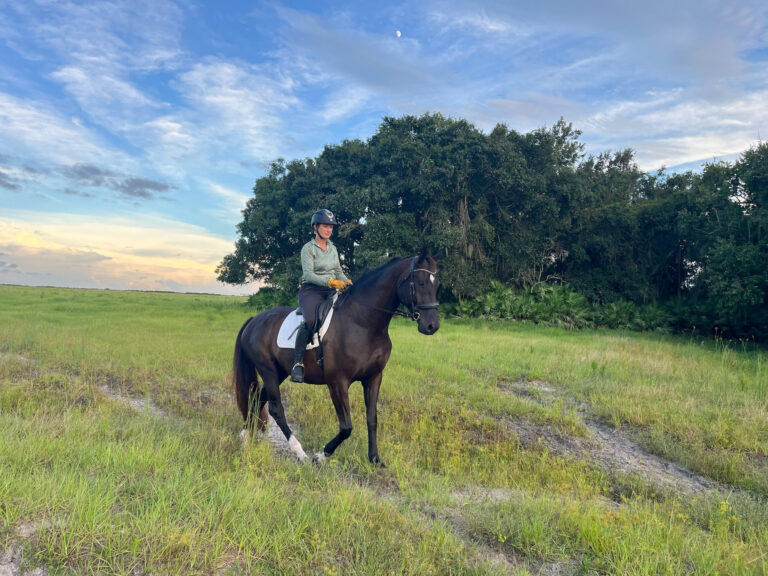.jpg)
Any activity involving horses will always carry an inherent amount of risk. Add in the element of galloping a horse at speed over solid cross-country obstacles, and eventing carries one of the highest risk levels for serious injuries and fatalities among all equestrian sports.
Statistics gathered over the last two decades have painted a disturbing picture. Since 2004, the Fédération Equestre Internationale reports that 14 event riders around the world have died at international competitions due to fatal accidents on cross country. While the FEI only reports fatalities that occur at international competitions, the website horsetalk.co.nz has tracked 38 riders around the world who have died from accidents during both national and international events for the same time period; it lists another 17 riders who have died in eventing since 1997. The same website counts 91 horse deaths on cross country since 2005 from falls as well as other injuries, including cardiovascular and pulmonary compromise (see “Studying Horse Fatalities” below).
The risk of serious injuries and fatalities increases significantly when a horse hits a solid obstacle and falls, throwing the rider to the ground at high speed or, in the most severe cases, falling on top of the rider. The FEI reports that horse falls are currently happening at a rate of one horse fall for every 63 starters on cross country, with the risk of a serious rider injury occurring in one out of every 55 horse falls. In addition, there is one rotational fall for every 572 starters, with the risk of a serious injury to a rider in those falls listed as one in every five.
These statistics weigh heavily on 2000 U.S. Olympic individual gold medalist David O’Connor. Following a four-year term as coach of the U.S. Eventing Team, David was elected chair of the FEI Eventing Committee in 2017 with a platform to further risk-management in the sport.
“If we reduce horse falls to an absolute minimum, people won’t be getting seriously injured,” David says. “Our number-one measure has to remain reducing horse falls.”
David has championed this mantra since 2000, when he sat on the new FEI International Eventing Safety Committee. Formed following the fatal accidents of five event riders in Great Britain during the 1999 season, the committee sought to address the growing concerns about safety in eventing and recommend changes to ultimately save both human and equine lives.
Chaired by Peregrine Cavendish, Marquess of Hartington in England, the committee released what became known as “the Hartington Report” in April 2000, the most comprehensive overview of risk- management in eventing at the time.
While the Hartington Report recommended numerous changes, two key areas emerged as the most critical in regard to boosting safety on cross country:
Frangible technology: Constructing cross-country jumps with deformable devices that allow part or all of a solid obstacle to collapse, thus decreasing the risk of horse falls and particularly rotational falls.
Data tracking: A worldwide statistical database to track horse and rider falls, injuries and fatalities. The FEI began compiling this data in 2002 and has released an eventing statistics report every year since 2007.
The Evolution of Frangible Technology
British Eventing, Great Britain’s national governing body for eventing, spearheaded much of the early research into frangible technology in partnership with Transport Research Laboratory, an independent transport consultancy and research company based in Wokingham, England.
After conducting extensive film analysis of cross-country accidents, TRL determined that rotational falls occur most commonly when the horse hits a fixed jump between his knee and elbow, which causes a rotating motion over the jump. If the horse hits the jump below the knee, he is better able to scramble over the jump and stay upright, thus preventing a fall and potential crushing injury for the rider.
TRL developed a mathematical model and built a crash horse to test the theory, and the first frangible pin, a safety device designed to limit the force of a horse impact, was developed as a result. The new frangible pins were tested on post-and-rail fences at nine British Eventing horse trials in 2002, including the Badminton Horse Trials, and fitted to all new fences at every level on British cross-country courses prior to the start of the 2006 season. Other countries followed suit, using frangible-pin technology in various situations.
In 2013 the FEI approved a new type of frangible device, the MIM Safe New Era Clip, for use in international competitions. Whereas frangible pins break only under vertical force when the horse makes contact with the top of the fence, the MIM Clip allows the pins to break under both vertical and horizontal force when the horse makes contact with the front of the fence, thus providing another safeguard against rotational falls. The MIM Clip is now approved for oxers, post-and-rail fences, gates, walls and tables.
The MIM Clip also features a reusable indicator tool that allows fence judges to see if the pin has been weakened by the horse making contact with the jump, and the pin can also be easily repaired by the fence judges. In contrast, replacing frangible pins requires a lengthier repair process from the course-building crew, often leading to a hold on course and delaying the competition.
Today the FEI estimates that frangible technology is found on an estimated 3,500 cross-country fences at international-level horse trials around the world. New frangible technologies are currently being tested in Germany and Australia.
Mike Etherington-Smith, one of the world’s leading cross-country course designers, designed the tracks at the 2000 and 2008 Olympic Games, 2010 World Equestrian Games and the Rolex Kentucky Three-Day Event for 17 years. He also sat on the committee that produced the Hartington Report.
With his career as a course designer spanning two decades, Mike says the most important development in cross-country course design has been the introduction of frangible technology. “We have to be careful that we don’t go too far down the line and have knockdown fences because that’s not what the game is all about,” Mike says. “But if the horse or rider makes a mistake, they shouldn’t be penalized with serious injury.”
The Impact of Frangible Technology
Since the FEI began recording data in 2006, horse falls on cross country have been reduced dramatically at international competitions. Rotational falls dropped by more than half, from .37 percent of starters on course, or one rotational fall for every 268 starters, to .17 percent of starters, or one rotational fall for every 572 starters.
“The technology is working, but it’s not foolproof,” David says. “No technology can be foolproof, like a seatbelt, but you still wear one.”
Additional fatalities in eventing over the past two eventing seasons—five event riders have died on both national and international cross-country courses since 2016—triggered an increased push for the mandatory use of frangible technology.
Numerous national federations, including the U.S. Equestrian Federation, called for the FEI to require frangible technology on courses following the death of 29-year-old Maxime Debost last September 23, due to a rotational fall at the Châteaubriant CCI* in France.
“It is important to note that frangible devices are one element in a wide spectrum of risk-management initiatives,” the FEI said in a statement. “While they are clearly an important component, they will not in themselves eliminate all risk from the sport.”
“It’s a tricky balance,” Mike says. “These are the things you wrestle with in your mind. Do we want to ask horses to essentially become show jumpers in their style on cross country? We certainly don’t want riders thinking they have to show jump the fences on cross country.”
William Micklem, an acclaimed coach from Ireland and leading voice in the eventing world, has remained an advocate for frangible technology since its inception and has called for the FEI to mandate its use.
“There are many factors involved in safe cross-country riding apart from design and placement of the fences themselves: the rider’s skill and experience, the horse’s training and experience, the health of rider and horse, coaching and instructions given to the rider and footing and weather conditions on the day,” William says.
“Using frangible technology will not change the fact that horse and rider will still need a progressive education,” he continues. “But when there has been a fence without frangible technology and a rider has died in a rotational fall, who can say in these circumstances that it was better for the sport that they died?”
While the FEI hasn’t mandated the use of frangible technology on international courses, many national federations have passed their own rules requring devices to be fitted on fences at national competitions.

Numerous Pieces to the Puzzle
Two-time U.S. Olympic team silver medalist and experienced eventing coach Jim Wofford believes utilizing frangible technology is just one piece of the safety puzzle. Eventing has undergone numerous facelifts since he joined the U.S. Eventing Team in 1965, namely abandoning the traditional long format for the short format in the last decade.
“Every time you change one aspect of the sport, you change the entire intent of the sport,” Jim says. “It’s like tapping a kaleidoscope. If you increase the importance of the dressage test, everything else changes. If you change the height, technical spread and difficulty of show jumping, then everything changes in relation to that.”
Despite the various changes to eventing’s phases and format over the years, Jim says he believes the most critical element that can boost safety in eventing has remained unchanged: Ride a good jumper.
“Good jumpers are born and trained,” he says. “You can train a horse to be a very good jumper and totally robotic. You can also train a horse to be a good jumper and very independent. Of those two paths, the independent horse is a much safer ride because seeing your strides and knowing your distance work well until it doesn’t work. When it doesn’t work, it’s a catastrophe.”
The burden also remains with the rider and coach to make the decision about when it is appropriate to move up to a more difficult level, Jim says, or to decide whether a higher level is beyond the horse’s mental and physical capacity.
“There is a tendency for riders to say, ‘I am qualified for the Intermediate level because I have my mandatory qualifying score at two Preliminary events. Therefore, I have now become an Intermediate-level rider.’ You can fulfill a qualification, but you are not truly competent at the next level yet.”
EquiRatings Changes the Game
As long as horses and riders compete at levels beyond their skill set and ability, serious accidents will inevitably occur. Since the launch of EquiRatings, an equestrian data science company, in 2015, data analysis has significantly changed the way both risk and performance are analyzed in eventing.
EquiRatings co-founders Sam Watson, an Irish four-star rider, and Diarm Byrne, a former corporate lawyer in Ireland, work with national federations and high-performance teams around the world to design metrics to measure and ultimately manage performance and risk. Built on the principle that performance and risk are inextricably linked, EquiRatings designed the EquiRatings Quality Index system, tracking cross-country outcomes with unique formulas designed to provide a risk rating for every horse at every level.
The approach has proved remarkably successful. Ireland became the first national federation to implement ERQI at the national level in 2016. By preventing the 1.5 percent of horses with the lowest ERQI ratings from competing at that particular level, the federation saw the number of horse falls drop by more than half at the upper national levels that year. The same reduction in falls continued in the 2017 season.
The FEI signed a four-year deal with EquiRatings in 2017 with a goal to implement ERQI on an international level.
More national federations are also signing on to use ERQI at their own horse trials. British Eventing called ERQI “one of the most important developments in risk- management seen in the sport, possibly ever” and began to develop its own ERQI system during the 2017 season.
The U.S. Eventing Association announced a safety partnership with EquiRatings in 2017 and launched ERQI at the national level in 2018, allowing riders to view their horse’s risk rating in a database. Australia recently announced that it, too, will adopt the ERQI risk-ratings system at the national level this season.
“Many clients don’t know their current risk levels, which becomes the first step,” Sam adds. “First, we must measure, then we can manage. We encourage our clients to talk in quantifiable metrics because this is the first step to defining objectives.”
Diarm believes when discussing the merits of a risk-ratings system like ERQI, the key word to focus on is the “quality” of a horse’s performance.
“Some of our qualification tools focus on quantity,” he says. “For example, having two clear cross-country runs at the three-star level before progressing to four-star. Before the ERQI existed, there was no difference between a horse with two clears from two runs and a horse with two clears from 13 runs. When it comes to risk, our data analysis shows that there’s a vast difference.”
‘We Are All in This Together’
While considerable steps have been taken to increase safety in eventing and ultimately reduce horse falls—from frangible technology to data tracking and increased awareness and responsibility regarding risk—fatalities have not been eliminated. As long as horses are still falling on cross-country courses, the risk of serious injury and death to both horse and rider remains high.
Four-star eventer Jonathan Holling became involved in furthering the safety movement in 2008 when his horse Direct Merger suffered a pulmonary hemorrhage (blood in the lungs) and died on cross country at Red Hills Horse Trials in Tallahassee, Florida. At that same event, Leprechaun’s Rowdy Boy, ridden by Missy Miller, also died of a pulmonary hemorrhage on cross country, and Olympic bronze medalist Darren Chiacchia suffered serious injuries following a rotational fall.
“That was a bad day for everyone,” Jonathan says. “When I left that competition, one thing that hit me was what an amazing community we are and how close knit we are on every level. I was also hit with a guilty conscience, like, ‘What are we doing?’ This is what I’ve dedicated my life to, so either I quit and do something else completely or I become a part of the solution.”
Jonathan serves as co-chair of the USEA Cross-Country Safety Sub-Committee and as FEI National Safety Officer for the U.S., one of 43 FEI National Safety Officers from countries worldwide who are responsible for submitting reports on falls and serious injuries that occur at events in their countries.
He attended the FEI Eventing Risk Management Seminar in Lausanne, Switzerland, in January and says he was struck by the deep level of dedication of individuals around the world who are working together toward the common goal of a safer sport.
“Some countries are dealing with their own safety challenges slower and some are dealing with them more aggressively, but everyone is wholeheartedly trying to do the right thing,” Jonathan says. “We are all in this together trying to figure this out.”
Studying Horse Fatalities
While horses can sustain catastrophic injuries on cross country that lead to euthanasia, cardiovascular and pulmonary (lung) compromise can also cause sudden equine death in eventing.
The U.S. Eventing Association formed the Cardiopulmonary Research Group in 2008, led by Dr. Catherine Kohn, VMD, to study the risk factor for these types of fatalities in competitions and possible strategies to prevent them.
By obtaining autopsies from horses who die in competition, the USEA can determine whether horse falls, and ultimately fatalities, occurred due to underlying heart or lung disease. Since beginning the study in 2008, the Cardiopulmonary Research Group has found that extensive pulmonary hemorrhage (blood in the lungs) and abdominal bleeding (due to rupture of a large blood vessel) were a factor in numerous equine fatalities.
In the study’s recent update, Dr. Kohn recommends event riders have a veterinarian carefully listen to their horse’s heart prior to the first competition of the season.
“If the horse’s heart rhythm is normal and there are no heart murmurs, schedule annual reevaluations to ensure that heart function continues to be normal,” she said. “If your veterinarian detects an abnormality in heart rhythm or a heart murmur, your horse should be evaluated by a veterinary specialist with experience and advanced training in equine cardiology.”
Read “Research Update: Equine Heart Health” in the May 2016 issue for more information.
Frangible Penalty Controversy
The FEI’s rule regarding frangible technology awards 11 penalties to a horse-and-rider team that breaks a frangible device, but it gives the event’s ground jury the power to review the incident and lift the penalties. “In the case of unexpected activation (i.e. activation by an insignificant contact), the Ground Jury will be called to evaluate the possible removal of the penalty,” the rule states.
Renowned coach Jim Wofford supports the use of frangible technology on courses, but says the consistent deployment of the devices presents a problem, citing an example from the 2016 Rolex Kentucky Three-Day Event. Rider Hannah Sue Burnett and Harbour Pilot competed there to gain a qualifying score for the 2016 Rio Olympics, but tapped the back rail of Fence 3 on cross country, a frangible open oxer, and broke the pin to result in 11 penalties. The ground jury opted not to remove the frangible penalties in Hannah’s case. Rio Olympic selection procedures stated that a qualifying score could not have any jumping penalties on cross country, so Hannah missed her chance to qualify for Rio.
“If you watched the video footage of the event, many other horses tapped the fence and it didn’t come down,” Jim said. “That’s a life-changing event due to technology we didn’t have 20 years ago and the ground juries have not caught up to it. We have to be aware of that. We have to make the playing field as level as possible and apply new technology in the fairest way possible.”
This article was originally published in the May 2018 issue of Practical Horseman.








